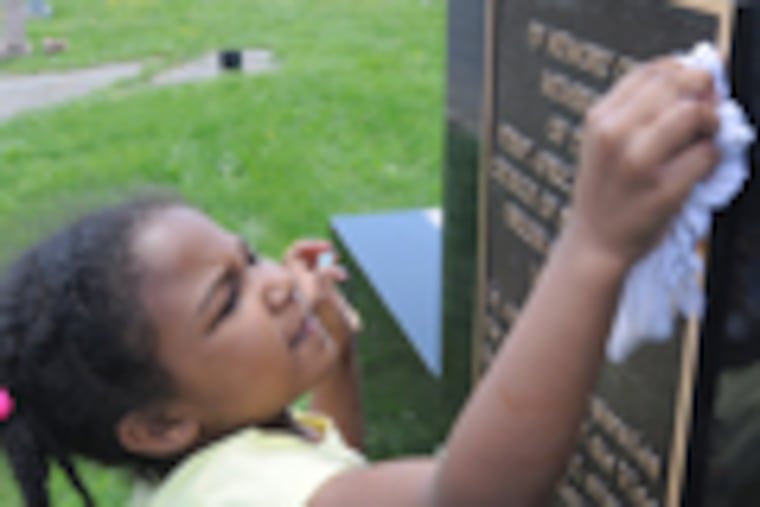Annette John-Hall: Community cleanup at historic cemetery
I spent Saturday at - of all places - historic Eden Cemetery in Collingdale. Figured that was the place to be, just in case the rapture came.

I spent Saturday at - of all places - historic Eden Cemetery in Collingdale. Figured that was the place to be, just in case the rapture came.
I mean, who wouldn't want to be swept up to glory with the likes of renowned contralto Marian Anderson (1897-1993), freedom fighter Octavius V. Catto (1839-1871), abolitionist William Still (1821-1902), architect Julian Abele (1881-1950), and track-and-field gold medalist John B. Taylor Jr. (1882-1908), along with hundreds of other notable African Americans whose achievements left an enduring mark on the world?
I admit the prospect of entering the pearly gates in such esteemed company crossed my mind.
But rest assured, the ramblings of a false prophet weren't the real reason I found myself in America's oldest African American public cemetery on a glorious afternoon.
Like David Brown, general manager of WURD-AM (900) radio, and Todd Bernstein of Global Citizen, who organizes Philly's annual Martin Luther King Day of Service, I had read the story by my colleague, Kristin E. Holmes, that laid out Eden's attempt to sustain, restore, and ultimately become a living historic and cultural destination.
A long struggle
It hasn't been without a struggle, starting with Celestine Cromwell, the wife of a cemetery board member and the first person scheduled to be buried at Eden in 1902.
But as history would have it, a band of white Collingdale residents blocked the entrance to the cemetery, wanting no part of the interment of blacks in their neighborhood. Never mind that African Americans owned the cemetery.
Cromwell's body was returned to Philadelphia and interred at Eden the following evening, in the dark of night.
It didn't end there. Recently, Eden has suffered from a rash of vandalism - knuckleheads on ATVs overturning and defacing about 200 headstones; folks unloading trash and allowing their dogs to dump on the burial ground; not to mention arsonists burning down the administrative offices, not once, but twice.
The administrative staff moved back three years ago. "We had to fight back," said Mina Cockroft, general manager of the cemetery. "I couldn't manage from a distance."
Responding to WURD and Global Citizen's call for service, about 100 volunteers spent the day scraping, priming and painting the front gates of the cemetery, planting flowers, pruning trees, and cleaning headstones.
Family history
"We've got three generations of family [buried] here," said Marsha Napper, 60, as her 5-year-old granddaughter, Kymberli Napper Preston, purposefully wiped down a headstone. "I've got 11 grands and they need to know their history. . . . Yes, we will be back."
Cockroft and I head south up the hill, in a section of the cemetery named for revolutionary abolitionist John Brown.
We stopped to pay homage at Catto's grave site, and Still's. As we scaled a southern ridge that looks out over the 53-acre holy ground, Cockroft tells me something that gives me goosebumps.
"Frances Ellen Watkins Harper is farther up."
Did she mean the Frances E.W. Harper (1825-1911), one of my cherished role models? Women's rights activist, abolitionist, and lecturer? The visionary who fearlessly refused to give up her seat on the horse-drawn trolley in Philadelphia, a century before Rosa Parks?
The truth-teller who penned these lines of her most famous poem, "Bury Me in a Free Land":
Make me a grave where'er you will / In a lowly plain, or a lofty hill. . . .
Cockroft asked if I would like to keep up Harper's plot as part of a new adopt-a-grave-site program the cemetery has started. I'd be honored, I said.
Make it among earth's humblest graves / But not in a land where men are slaves.
"Don't worry Mrs. Harper," I thought as I grabbed a bucket and wiped down her headstone, along with the adjacent one of her daughter, Mary. "I think you'd be mighty pleased with your resting place."